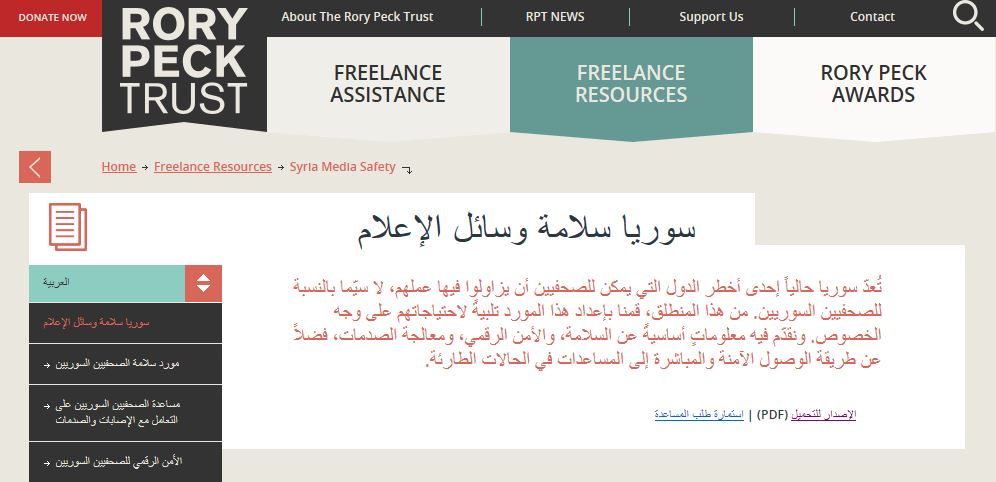In August, a group of international media watchdogs launched a one-stop-shop for journalists working in war-ravaged Syria. The toolkit offers advice on physical safety, digital security, and emergency assistance for those fleeing their attackers.
For four years running, Syria has been the deadliest spot on earth for journalists. Eighty-five have been killed in the line of duty since the conflict ignited in March 2011. More than 90 have been abducted, the highest number the Committee to Protect Journalists (CPJ) has recorded in a war zone.
Twenty-five remain missing, the majority of them locals, according to CPJ.
The toolkit was assembled by the Syria Response Group, a network of media organizations that offers support to those covering the civil war.
“We all work directly with Syrian media outlets and journalists and have produced this resource with their collaboration and input,” says Sarah Giaziri, program officer in the Middle East and North Africa for Rory Peck Trust, one of the group’s leading members along with CPJ. “In Syria, there is no safe place for them to report from.”
All sides in the conflict target journalists. Threats come from armed extremist groups in opposition-held areas and from the Syrian military. The situation is unpredictable, with territory constantly changing hands.
Bombing and shelling is a constant danger. So are the fighters of the Islamic State, also known as ISIS, who are notoriously brutal.
In August 2014, ISIS kidnapped American freelancers James Foley and Steven Sotloff inside Syria. Their videotaped execution shocked the world and highlighted the vulnerability of those who cross into Syria.
Available in Arabic with English translation, the online resource offers thirteen in-depth sections, including one on how to obtain trauma counseling to help journalists keep their own psyches in balance. Fear has driven many media workers to leave their homeland.
According to Sherif Mansour, CPJ’s Middle East and North Africa coordinator, CPJ has helped 101 journalists who have fled Syria in the past five years, which is twice more as any other country. Local journalists are most at risk, he says.
As foreign correspondents were pulled out due to escalating violence, local reporters, citizen journalists, media activists and freelancers became the first line of defense in reporting on a war that has driven more than eleven million from their homes.
More than 220,000 people have been killed. Four million Syrians are seeking refuge in other countries, making them the world’s largest refugee population under the United Nations’ mandate.
Many of those delivering information from inside Syria lack professional training and are ill-equipped to cover combat, according to Mansour. Despite the obstacles, they supply a steady stream of amateur videos to YouTube and tweet updates of the fighting in their neighborhoods and villages. Some are hired as stringers for foreign media.
Without them, there would be scant information emanating from one of the world’s worst humanitarian nightmares.
“When meeting with these young reporters, one wonders what laws exist to protect them, and if there are international regulations to define media companies responsibilities to local freelancers,” wrote Ghalia Bdiwe, a reporter with Canadian Journalists for Free Expression in a January posting. “It’s worrisome when there is not a clear answer to this question. Most of these intrepid freelancers don’t even receive basic, often-life-saving benefits.”
The Syria Media Safety Resource is attempting to fill some of those gaps.
With access to electricity and the Internet severely limited in Syria, PDF files of the toolkit can be downloaded and read offline. The hashtag #syriamediasafety provides social media connection.
“What makes [this resource] different is that it is specifically tailored to the needs of Syrian journalists,” says Giaziri. “Local journalists face so many challenges reporting from their own back yard.”
The resource can be viewed in Arabic and English: syriamediasafety.org
Link to Syria Response Group: syriaresponsegroup.org


Comments (0)
Comments are closed for this post.